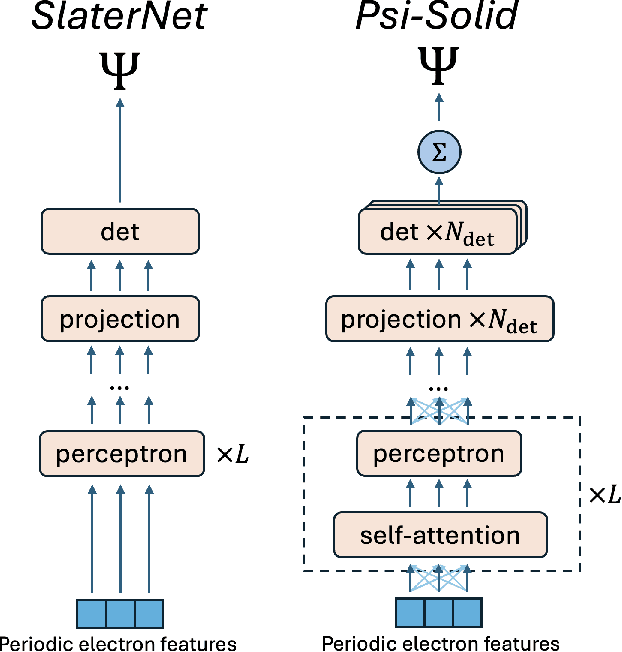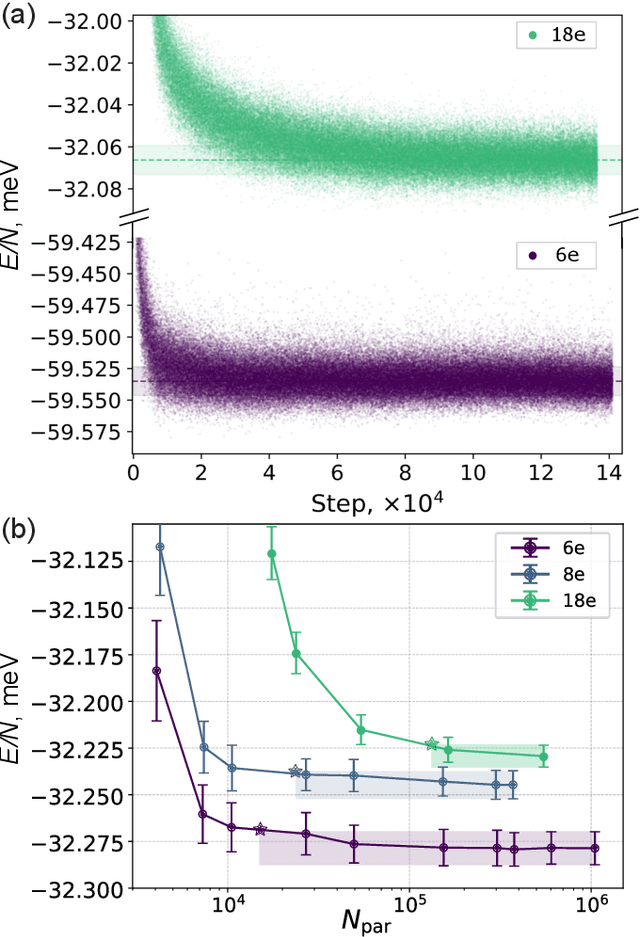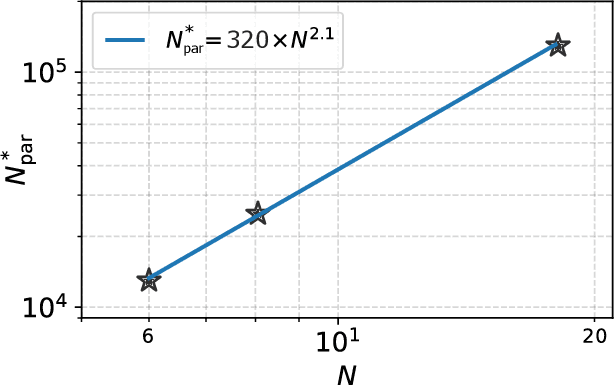Is attention all you need to solve the correlated electron problem?
Paper and Code
Feb 07, 2025



The attention mechanism has transformed artificial intelligence research by its ability to learn relations between objects. In this work, we explore how a many-body wavefunction ansatz constructed from a large-parameter self-attention neural network can be used to solve the interacting electron problem in solids. By a systematic neural-network variational Monte Carlo study on a moir\'e quantum material, we demonstrate that the self-attention ansatz provides an accurate, efficient, and unbiased solution. Moreover, our numerical study finds that the required number of variational parameters scales roughly as $N^2$ with the number of electrons, which opens a path towards efficient large-scale simulations.
* 10+5 pages, comments welcome
 Add to Chrome
Add to Chrome Add to Firefox
Add to Firefox Add to Edge
Add to Edge